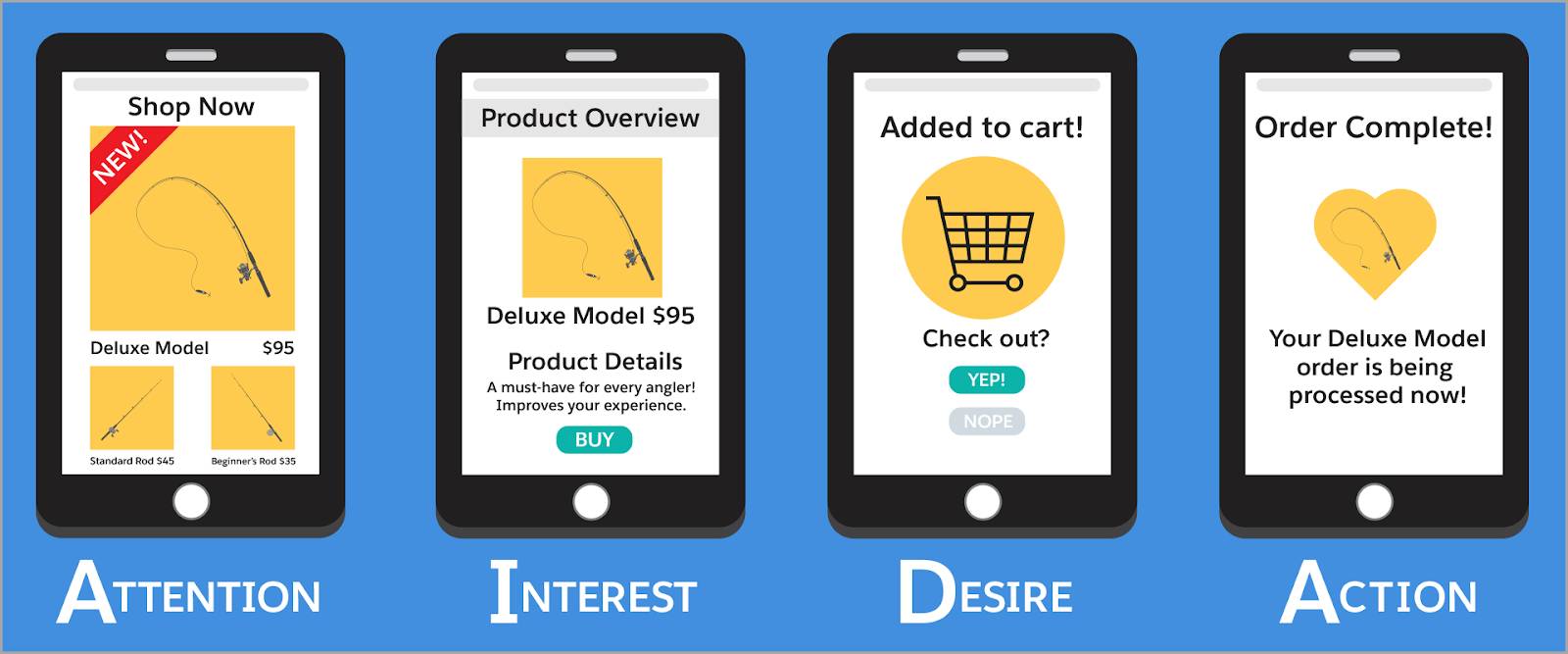Learn About Strategic Prospecting
Learning Objectives
After completing this unit, you’ll be able to:
- Describe how strategic prospecting helps you reach your business goals.
- List the two sales stages that you focus on when prospecting.
- Explain why you sell the benefits to earn a prospect's interest.
- Define the “power line.”
The Skill of a Lifetime
As a sales professional, you not only have a long list of important things to do but loads of new skills to learn. Probably the most important skill of them all: prospecting. Why is that? Well, just like you need a line in the water to catch fish, you need to prospect for clients to get sales.

And we don’t mean just any type of prospecting. We’re talking about strategic prospecting. This might be called a number of different names–but the technique is always the same. What’s more, it can be used in a wide range of roles.
When you prospect properly, you:
- Become a trusted advisor—You enter into an account with an intelligent point of view, with a prospect who is interested in hearing your ideas.
- Focus on key accounts—With a big pipeline of prospects, you can choose to focus on top-tier accounts.
- Reduce discounting—Everyone wants a deal, and your potential customers are no exception. When you have a big pipeline, you can walk away from a deal and still meet quota. Who knows, maybe your confidence in holding the price will even encourage your prospect to do business with you.
- Meet your business goals—As a business development rep, you can uncover more leads. As an account executive, you can bring in more annual contract value (ACV).
Strategic prospecting can improve your job satisfaction and serve you for your entire career. It’s a craft that can be learned, practiced, and refined. Prospecting the right way gives you the focus to continually hone your skills and enjoy your job.
“Sales is the best profession in the world when done right, but the worst when done wrong. Let’s do it right.” –John Barrows
So Much More Than Cold Calling
When you started out in your sales career, you probably thought that prospecting meant calling and emailing people like crazy to find people to sell to. And you might have had some early successes doing that.
But now it’s time to up your game. To understand the right way to prospect, let’s step back and see where prospecting fits in the sales process.
The Four Phases of Selling
Think back to the last time you purchased a new product. Let’s say it was a fishing reel. Chances are, you went through the steps Elias St. Elmo Lewis identified back in the early 1900s as the four stages in the buying process.
| Stage | Description | The customer is thinking |
|---|---|---|
|
Attention |
Aware of the product |
Wow, I’ve never seen a reel like that before. |
|
Interest |
Curious to learn more about the product |
I’m so tired of my old reel. I want to check that one out. |
|
Desire |
Choose to purchase the product |
It’s smoother, faster, and more reliable than anything I’ve ever seen—and a good price. I want it. |
|
Action |
Purchasing the product |
I’m entering my credit card info and… done. |

The entire sales process, all four stages, can take a long time depending on the complexity of the customer’s needs.
Get ’Em Interested
The goal of prospecting, on the other hand, is super focused. Prospecting is all about getting the potential customer through the first two stages: Attention and Interest. All your focus at this point is on getting a potential customer to say, “Yes, I want to learn more.” That’s it.
To get a person’s interest, present the benefit that you can offer.
For example, what’s a more interesting statement?
- Check out this new lure with a new design.
- Here is a lure fish will bite on every time.
Option B, right? Most people want to know the benefit a product has to offer, not just a description of the product.
By the way, if you think back to the way you used to do prospecting, it might have included saying something like, “My name is Teresa from XYZ, and we sell product A, product B, and product C. Which would you like to purchase?”
There are a couple of things wrong with this approach. Asking for a purchase up front puts you squarely in the role of a salesperson trying to sell a product. You miss out on the opportunity to present yourself as a trusted advisor.
Starting now, your goal in prospecting is going to be much simpler: Focus on getting the prospect’s attention and interest. That’s it!
Get Above the “Power Line”
Getting attention and interest seems simple enough. But there’s a catch. You don’t want just anyone’s interest. You want attention and interest from people who can actually buy. How do you do that? Simple: Target people above the “power line.”
Every organization has people who make decisions and people who follow orders. People who are above the power line are able to approve the budget and take funds from different departments, even after the budget is approved.
Reaching people above the power line has some real benefits.
- If your request is accepted, you have the chance to have a strategic conversation, opening up to more ACV opportunities.
- If your request gets referred down to someone new, that person is likely to do as their boss asked, and follow up with you.
- If your request gets referred down a level, there’s a chance the new person is still above the power line.
For example, if you know you want to reach a VP inside an organization, you can try to reach out to that VP, but chances are, it’s going to be pretty hard. After all, the VP is getting tons of requests from everyone else who’s trying to sell a product.
Instead, if you reach out to the CEO, CIO, CMO, or other C–level leader, and they decide to send your request on to a VP, you’ll probably end up getting the meeting you were looking for.
You Just Upped Your Game
So, let’s review.
- Prospecting is a life-long craft that boosts job satisfaction.
- Prospecting is all about getting the attention and interest of the person above the power line in the organization.
- Prospecting is not about making hundreds of calls and sending hundreds of emails a week.
What a relief, right? Now you have a totally different perspective on how to practice the most important craft in the sales professional’s toolbox. Congratulations: You just upped your game.
Next, learn how to make it all happen in the Prospecting to Improve Sales module.